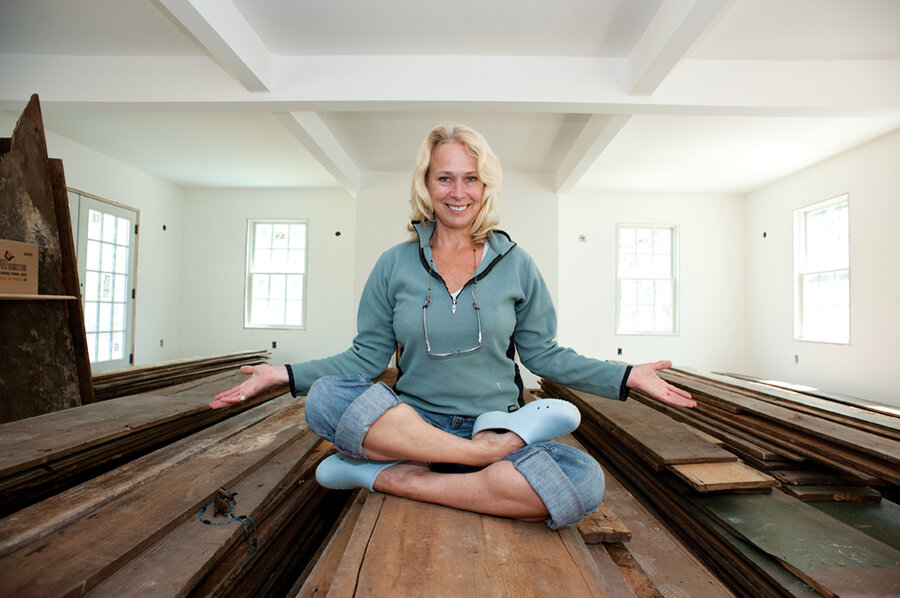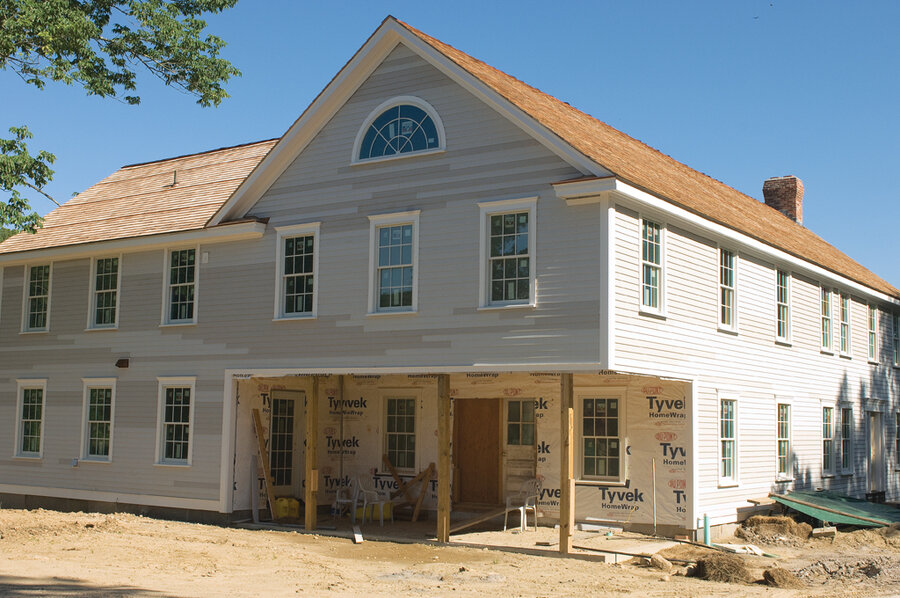A home made green and lean
Loading...
| East Haddam, Conn.
Almost a year has passed since my fiancé and I began renovating Sheep Dog Hollow in what we hoped would be a green and economical manner. Our goal was to test the proposition that "green" and "affordable" were no longer mutually exclusive, thanks to advances in technology and the various tax incentive and rebate programs designed to encourage people to kick the fossil-fuel habit.
The 100-year-old-farmhouse has been transformed from a musty, abandoned shell into a model of cutting-edge environmental technology. Our heat and air-conditioning now come from the ground beneath our feet; there's not a draft anywhere, given the tightness of our castor-oil-based spray-foam insulation; and our floors are made of boards rescued from old buildings before they were razed.
And while my savings and retirement accounts are drained, I haven't filed for bankruptcy. So, I conclude: mission accomplished. Well, almost. There's more to be done. Most of it is cosmetic, like the trim, painting, and putting up electrical fixtures. But we decided from the start that we didn't want to go into debt, so we will finish when our bank accounts recover.
As with any human endeavor, hindsight shows how things could have been done better. That's partly the purpose of this article, to tell you a few green-renovation lessons I learned – some of them the hard way – so you won't have to.
My biggest revelation
The most striking thing I found is that green building has arrived. As the motto of the National Association of Home Builders (NAHB) states: "Residential green building is no longer a trend – it is the future of building."
Green products are now sold at The Home Depot and Lowe's. They're more efficient and less expensive, compared with 30 years ago. Equally important, the notion of green building has become part of our conversation.
"When people ask what I do, I say 'green building,' " says Maureen Mahle, a green homes program manager at Steven Winter Associates in Norwalk, Conn. "It wasn't until the spring of 2007 when people stopped asking what that meant and understood it. I've definitely seen a change in awareness."
While people might now understand "green building," it is still far from the norm. Ms. Mahle and other green experts contend there still needs to be an adjustment in how the nation values energy efficiency. A green home still costs about 20 to 30 percent more than a traditional one to build or renovate. You have to consider "affordability" in the longer term, five or 10 years, and include monthly costs.
'Affordability' redefined
The energy-efficient windows we installed are a perfect example. They can cost as much as 50 percent more than regular windows, not exactly "affordable" as it's generally understood. But they have "low E" (low emissivity) glass. It's coated with a microscopic layer of metal that reflects heat, to keep warmth in during the winter and heat out in the summer. Considering that about 25 percent of a typical home's energy is lost through its windows, we decided it was a good investment (since the rest of the house is now properly insulated and sealed). The upfront cost is high, but we'll recover that, and more, in the longer term.
"Before, 'green' and 'energy efficient' were viewed as having an element of risk ... because they were expensive and not well understood," says Mahle. "But we have enough experience under our belts now to shift those perceptions. Green is now viewed as 'value added.' "
A little research in advance would have helped
When I began, I wasn't sure that was the case. I wanted to go green because it seemed like the right thing to do in light of concerns about global warming. We dived into the renovation process, learning as we went. In retrospect, it would have been easier had I first researched the advances in green building as well as the myriad resources available.
The Environmental Protection Agency's Energy Star website (www.energystar.gov) is a good place to start. It has a primer on energy audits, insulation, and R-factors. It also has an Energy Star adviser page that, when you plug in your ZIP Code, provides lists of ways to improve your home's efficiency and do-it-yourself guides. Turns out, the best way to start is also the most affordable: Insulate and seal your home.
"Before you even start to talk about alternative energy sources, you need to make a tight, energy-efficient [insulation] envelope," says Mark Nuzzolo, owner of Brookside Development in Woodbridge, Conn. "Once you've reduced the demand [for energy], then you can figure out how to heat it and bring in power."
For a big building or rehab project, go to the NAHB's National Green Building Program and the Green Building Council's Leadership in Energy and Environmental Design. LEED pioneered voluntary green building standards in 1993. Many consider them the platinum standard of green renovation. The NAHB also developed a set of standards, which have been accepted by the American National Standards Institute. Both organizations can guide you to qualified contractors.
"NAHB is obviously the biggest player in the home building industry," says Rick Schwolsky, editor in chief of EcoHome Magazine. "For them to come into this with their conference and a true standard – that's huge,"
Both groups offer a green-certification process. But there's a caveat: To qualify, a homeowner needs to have their involvement from the start. Since I wasn't aware of that, Sheep Dog Hollow will never qualify for a formal green certification.
If you're building or renovating with an eye to the market, a green designation can add 20 percent to a home's value – provided the real estate market in your area includes green attributes in appraisals.
Fortunately for us, though, we have a HERS (Home Energy Rating System) rater on board. It's the HERS rater's job to know the best green building practices in order to advise you. They're trained by the Residential Energy Services Network and are certified by the federal and many state governments to give your green project a score. That score is required to qualify for various tax incentives and rebates. We'll get our final score when the house is finished – by September, we hope.
•To read Alexandra Marks's other stories and blogs about the Sheep Dog Hollow renovation, go to: CSMonitor.com/Environment/Eco-renovation







